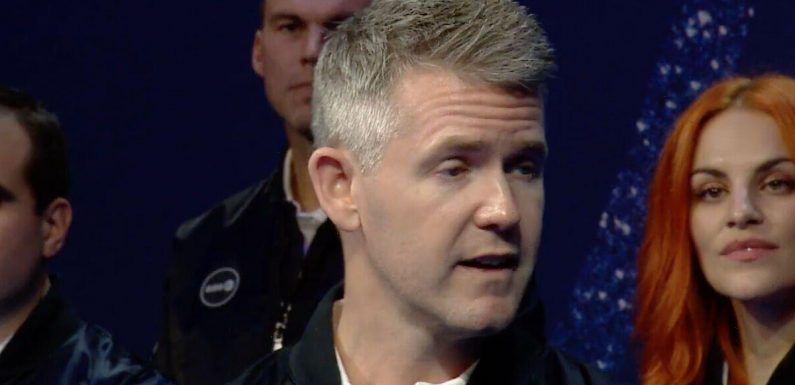
Space X and NASA launch its first female-led mission
We use your sign-up to provide content in ways you’ve consented to and to improve our understanding of you. This may include adverts from us and 3rd parties based on our understanding. You can unsubscribe at any time. More info
The UK’s John McFall, 41, is among the candidates selected to join the European Space Agency’s Astronaut Class of 2022 — all of whom could eventually be heading for the Moon. The announcement of the future crop of space explorers was made at the Grand Palais Éphémère in Paris this afternoon following the closure of the two-day ESA Council Meeting at Ministerial Level. The ESA Astronaut Class of 2022, the space agency said, includes career astronauts, members for the astronaut reserve — and also astronauts with a physical disability selected for a “feasibility project”.


Last year represented the first time since 2008 that the space agency has put out a call for applicants to join their astronaut program. In total, they received more than 22,500 valid candidates from across the ESA’s Member States and Associate Members — including 257 applications for the role of astronaut with a physical disability.
The most applications were received from France — with 7,087 submissions — followed by Germany (at 3.695), the United Kingdom (at 2,000), Italy (1,845) and Spain (1341).
Of the initial applicants, 76 percent were men and 24 percent women — with 530 women and 831 men invited to progress to the second phase of selection. Of the applicants from the UK, 166 made it through to the second stage.
After the initial screening — which considered each applicant’s CV, documentation and results of special questionnaires — the second stage saw 1,361 candidates subjected to a battery of tests from the practical through to the psychological at the ESA assessment centre in Hamburg.
This was followed by an additional, medical-based screening process — followed by two interviews. The first assessed behavioural and technical skills, while the latter interview was held with the ESA Director General himself, Dr Josef Aschbacher.
The new class of astronauts will be taking up duty at the European Astronaut Centre in Cologne, Germany, where they will undergo basic training for one year. Following this, they will move into the space station training phase before being assigned to specific missions.


Speaking during the announcement of the new class of ESA astronauts, John McFall said: “When it was announced they were looking for a candidate with a physical disability, I thought it was such an exhilarating possibility, such a brave and bold thing to do.
“So with my scientific background and vast range of experiences, I felt compelled to try and help ESA to help answer the question of if someone with a physical disability can do meaningful work in space. I think I can bring a lot to the study, including inspiration.”
He concluded: “Science is for everyone and so is space.”
On the outcomes of the ESA council meeting, France’s Finance Minister Bruno Le Maire said that it was successful beyond expectations. Europe, he added, can meet its space ambitions and “can compete with China and the US — the two other space powers of the planet.
Mr Le Maire also said that Europe had decided that it had a preference for sovereignty in the space sphere — both when it comes to missions like Ariane, but also when it comes to monitoring climatic changes from space and communications tech.”
German Coordinator for Aerospace Policy Dr Anna Christmann agreed, adding: in space. I think that is a very important signal that is sent here from Paris. We want to be a strong part of the global development of space technology.”
The ESA, she continued, is “so special”, calling the agency a “strong result” of European collaboration and expertise.
DON’T MISS:
Scotland’s ‘largest mediaeval coin hoard’ in 200 years unearthed [ANALYSIS]
National Grid automated alert sparks panic as firm cancels warning [INSIGHT]
Energy lifeline as Tesla tech battery storage site comes early [REPORT]

Dr Aschbacher noted that Europe has agreed to commit €16.9billion (£14.5billion) in funding for the ESA — an increase of nearly 17 percent from that put forward after the last ministerial conference — despite the various economic challenges at present and the linger impacts of the COVID-19 pandemic.
The ESA Director General added that €2.7billion (£2.3billion) of this would be dedicated for human and robotic space exploration. He also singled out two planned missions in particular — the first of which is “Argonaut”, the European Large Logistics Lander.
This craft will be a multi-mission “delivery truck” that will help carry various payloads to and from the Moon, including scientific experiments, rovers, rock samples and infrastructure. The first transport to the lunar surface, he said, is expected in the early 2030s.
Dr Aschbacher also admitted that ExoMars — which is intended to hunt for signs of past life on Mars — has experienced a “turbulent time” of late in the wake of Vladimir Putin’s invasion of Ukraine, which led to Europe ending collaboration with Russia over the project.
However, he noted, after discussing different options, Europe has decided to “take responsibility” to deliver the mission, with some assistance from the US and NASA.
Additional reporting by Maria Ortega.
Source: Read Full Article